How to Grow Alstroemeria (Peruvian Lily)
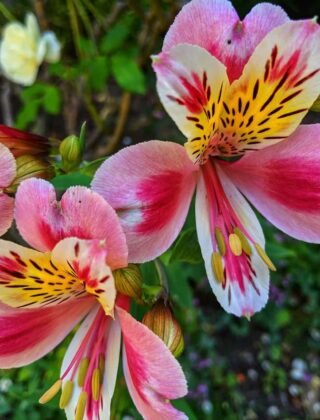
Introduction
Alstroemeria, commonly known as the Peruvian Lily or Lily of the Incas, is a captivating and vibrant flowering plant native to South America, particularly in Chile, Brazil, and Peru. Celebrated for its striking, multicolored blooms and delicate, trumpet-shaped petals, Alstroemeria brings exotic beauty to gardens and floral arrangements worldwide. These perennial plants, belonging to the Alstroemeriaceae family, thrive in various climates and are prized for their long-lasting flowers and lush foliage. The blooms typically showcase a dazzling array of colors, including pink, orange, red, purple, and white, often adorned with unique streaks and speckles that add to their ornamental appeal. Alstroemeria’s versatility, resilience, and stunning appearance make it a popular choice among gardeners, florists, and plant enthusiasts alike, symbolizing friendship, prosperity, and devotion. In this guide, we will walk you through everything you need to know to grow alstroemeria in your garden successfully.
Alstroemeria Varieties
Alstroemeria varieties are numerous, with breeders continually developing new hybrids to expand the range of colors, patterns, and plant characteristics. While it is challenging to list every single variety due to the vast number and ongoing development, here are some well-known and widely appreciated Alstroemeria varieties:
- Alstroemeria ‘Princess Louise’: Soft pink flowers with cream accents and darker pink streaks.
- Alstroemeria ‘Inca Ice’: Creamy apricot flowers with pink flushes and a yellow throat.
- Alstroemeria ‘Indian Summer’: Copper-orange blooms with yellow and red markings and dark foliage.
- Alstroemeria ‘Flaming Star’: Red and yellow flowers with dark streaks.
- Alstroemeria ‘Virginia’: Pure white flowers with subtle green streaks.
- Alstroemeria ‘Sweet Laura’: Fragrant, bright yellow flowers with orange accents.
- Alstroemeria ‘Apollo’: Soft pink blooms with deeper pink and white centers.
- Alstroemeria ‘Inticancha Bryce’: Bi-colored flowers with shades of purple and yellow.
- Alstroemeria ‘Rock & Roll’: Red flowers with white edges and intricate red streaks.
- Alstroemeria ‘Colorita Katiana’: Bold, red-orange flowers with a yellow center and dark streaks.
- Alstroemeria ‘Casablanca’: White flowers with lime-green markings.
- Alstroemeria ‘Butterscotch’: Yellow flowers with orange and red streaks.
- Alstroemeria ‘Selina’: Soft peach flowers with pink and yellow accents.
- Alstroemeria ‘Bonanza’: Bright orange flowers with yellow centers and red streaks.
- Alstroemeria ‘Third Harmonic’: Pale lavender flowers with darker purple streaks.
- Alstroemeria ‘Yellow Friendship’: Bright yellow flowers symbolize friendship.
- Alstroemeria ‘Tessa’: Dark pink blooms with a touch of yellow and red streaks.
- Alstroemeria ‘Lutea’: Pure yellow flowers.
- Alstroemeria ‘Orange Glory’: Bright orange flowers with darker markings.
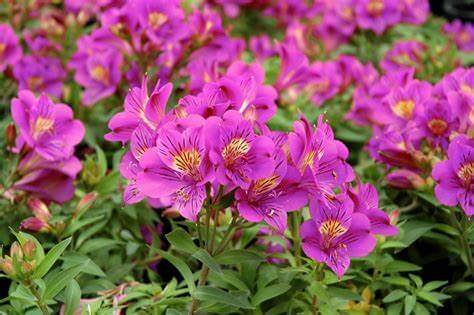
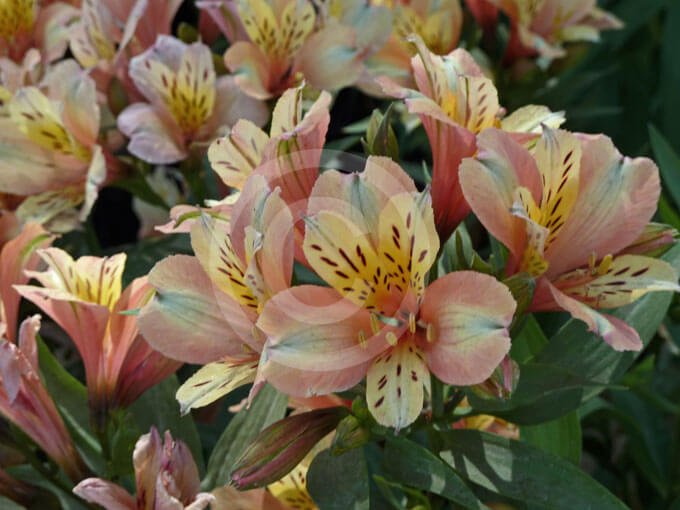
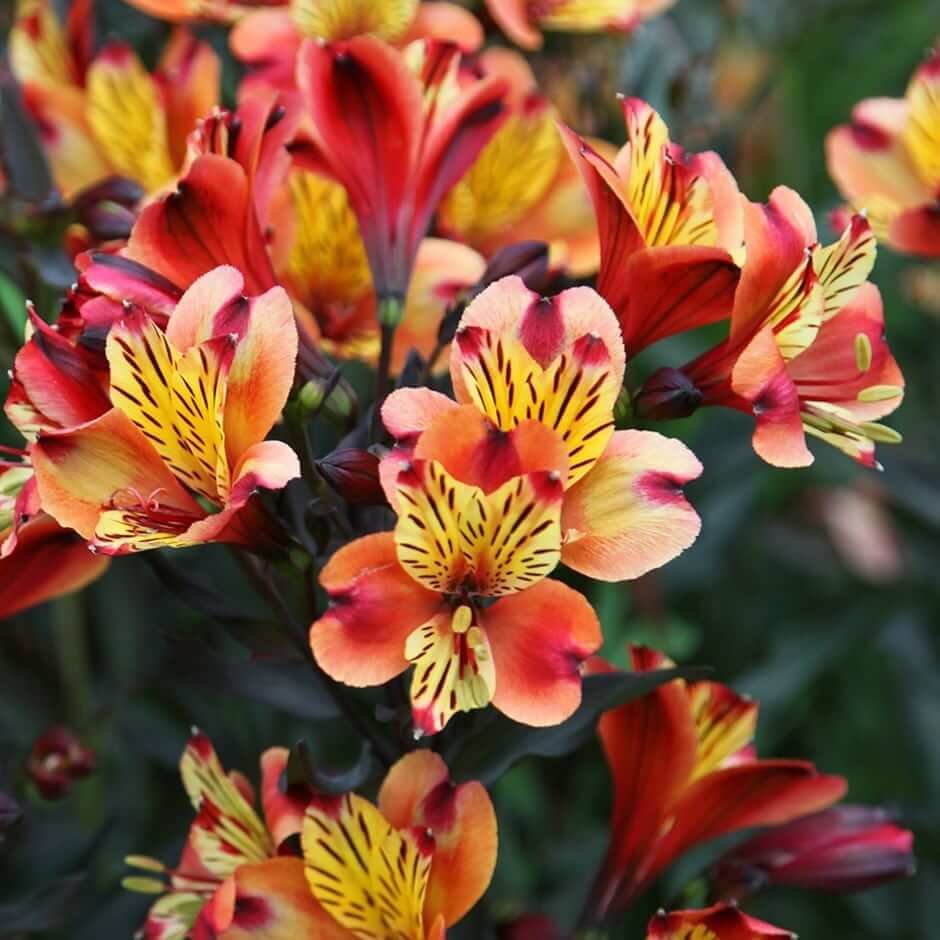
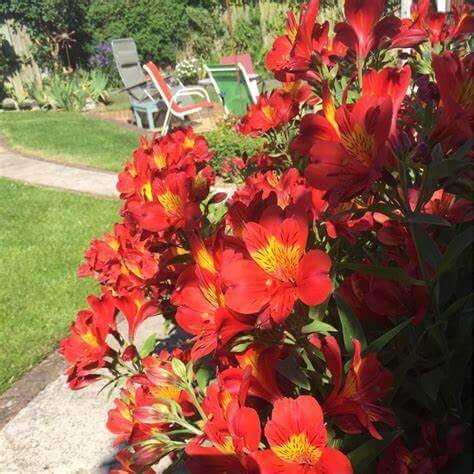
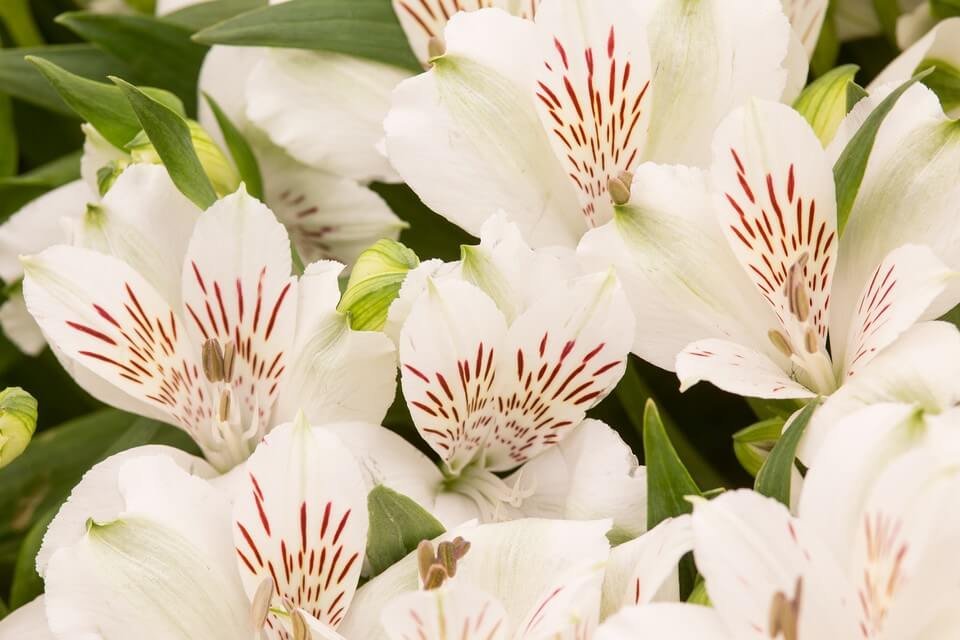
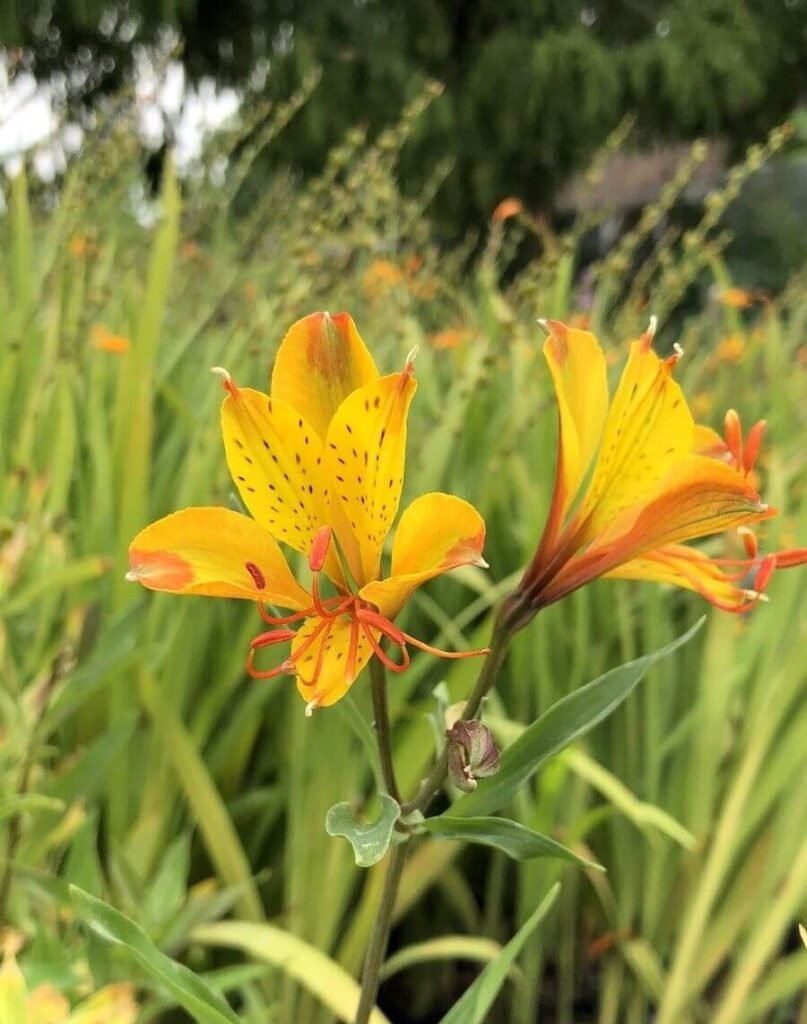
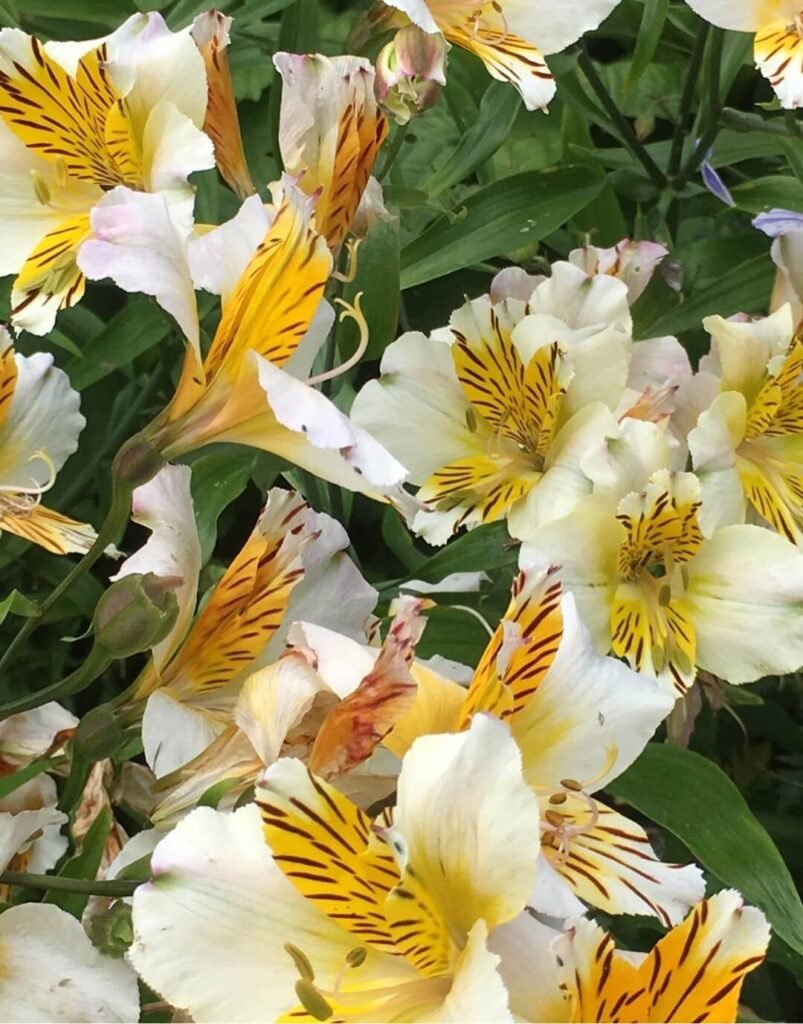
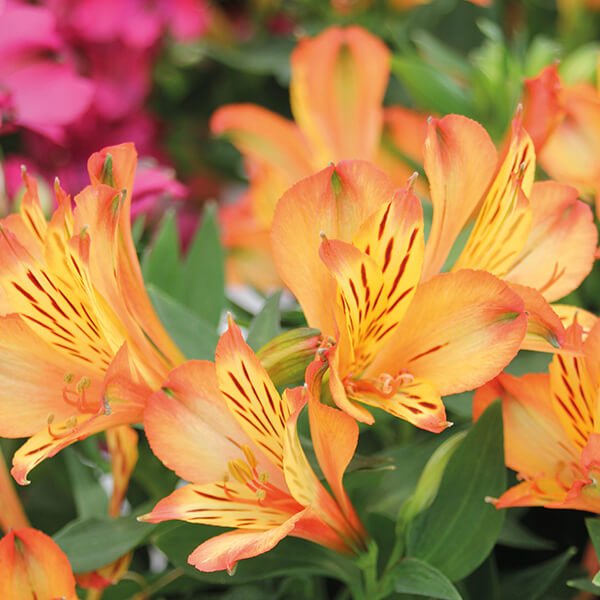
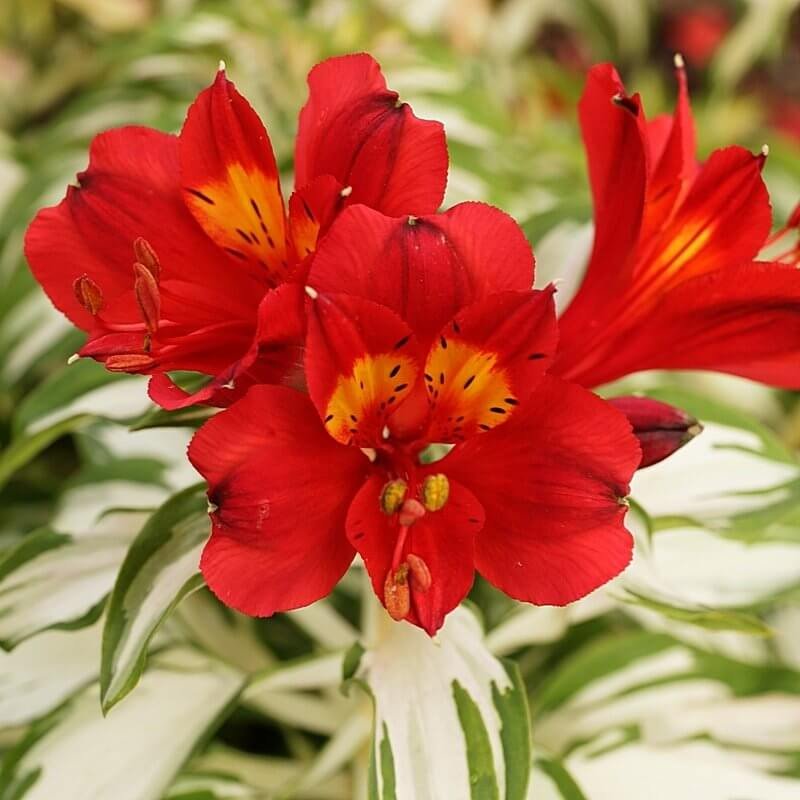
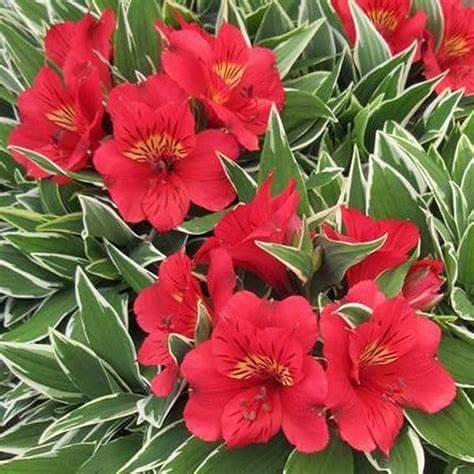
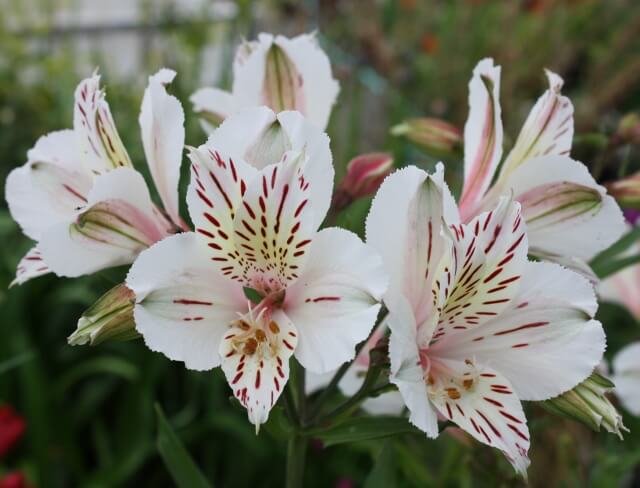
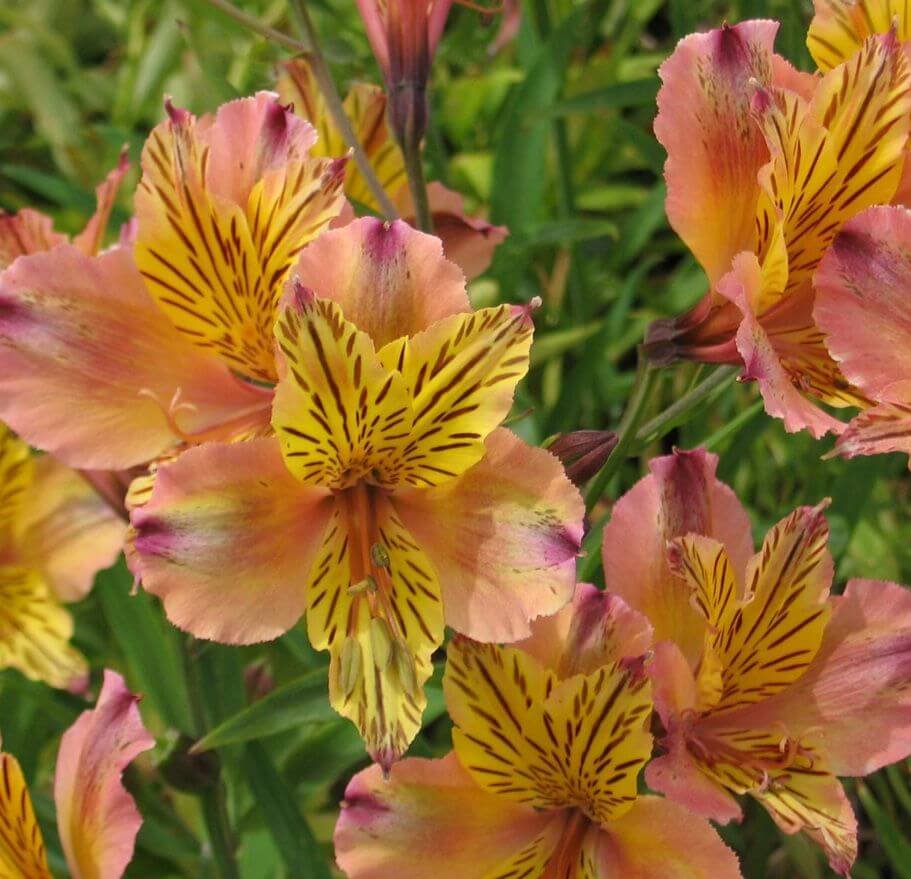
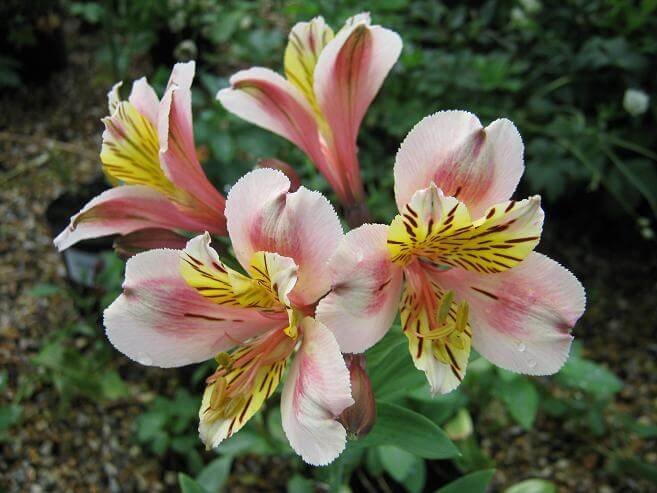
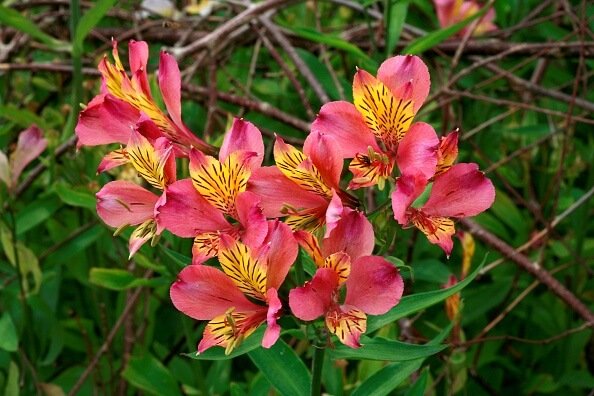

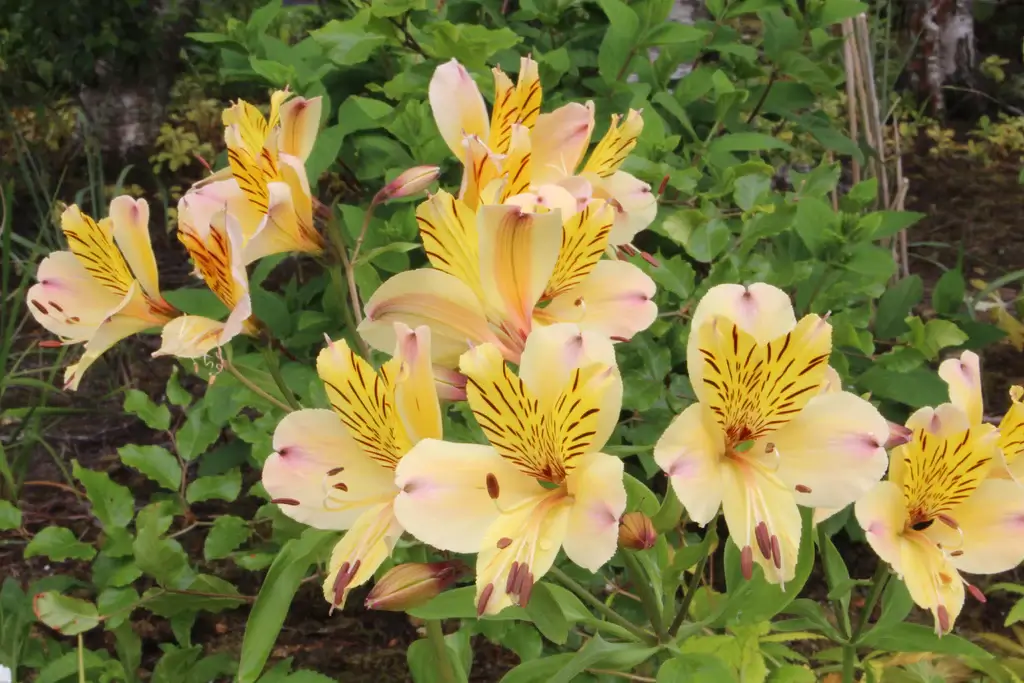
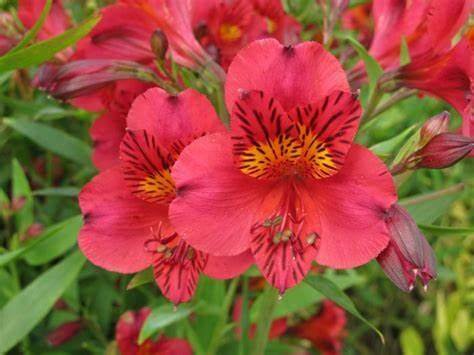
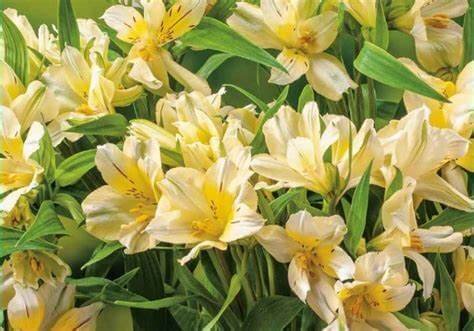
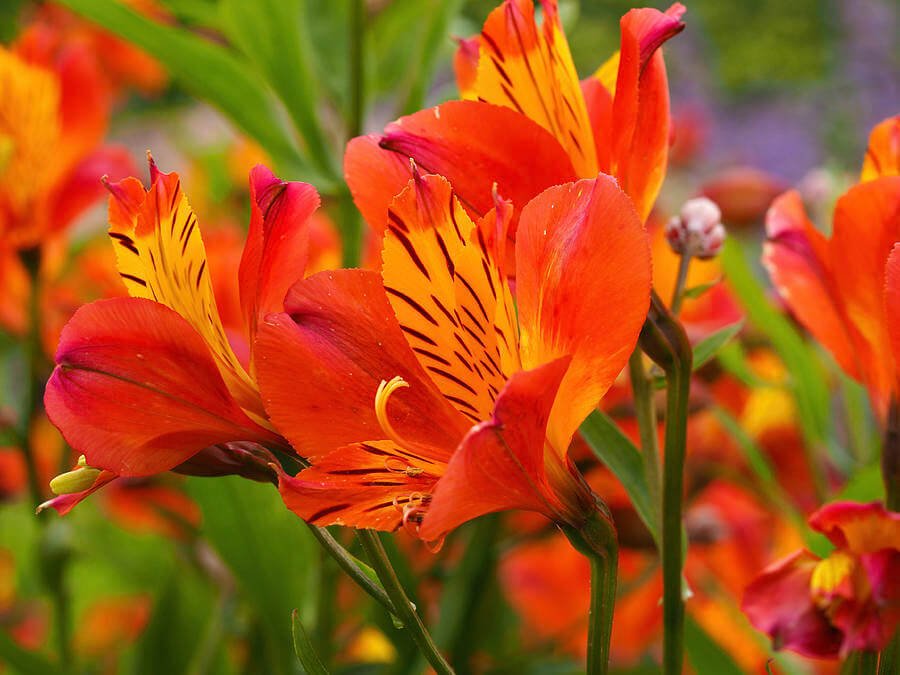
These varieties highlight the diversity and beauty of Alstroemeria, making them popular choices for gardens, landscapes, and floral arrangements. The continual breeding efforts ensure that new and exciting varieties are introduced regularly, offering even more options for enthusiasts and gardeners.
Finding the Perfect Spot – Planting Alstroemeria
Discovering the ideal location to grow your alstroemeria is a delightful step in your gardening adventure. These radiant flowers flourish when basking in the glow of full sun to partial shade. A sweet spot that welcomes the morning sunlight while offering a reprieve from the harsh afternoon rays is just what your Peruvian lilies need to thrive.
When you’re ready to nestle your alstroemeria into its new home, keep in mind that space is a friend, not a foe. Aim to place them about 12 inches apart, ensuring each plant has ample room to breathe and expand. This spacing is crucial for promoting healthy airflow around the plants, reducing disease risk and allowing each alstroemeria to showcase its beauty fully.
The planting process is an opportunity to give your alstroemeria a strong foundation. Prepare a hole that generously accommodates the root ball—about twice its width and depth. This extra space is your canvas for creating an inviting environment for the roots to spread. A backfill mix of nutrient-rich compost and garden soil will provide a nurturing bed for your plants to take root.
This step in your gardening journey is not just about planting; it’s about setting the stage for a vibrant display of color and life. By choosing the right spot and preparing it with care, you’re paving the way for your alstroemeria to grow and flourish, bringing joy and beauty to your garden for seasons to come.
Soil and Nutrition – Feeding Your Peruvian Lilies
For those eager to see their garden grow with the vibrant hues of alstroemeria, understanding the importance of soil and nutrition is key. These splendid blooms flourish in soil that not only drains well but is also rich with the goodness of organic matter. Imagine creating a sumptuous feast for your Peruvian lilies, one that ensures they have all they need to grow, bloom, and brighten your garden. Before planting, work a generous layer of compost into the soil. This is akin to laying a nutrient-rich foundation, setting the stage for your alstroemeria to put down roots in an environment where they can readily access the sustenance they require.
As the growing season unfolds, your alstroemeria will appreciate a little extra boost to support their vibrant flowering and robust growth. In the spring, as the world awakens, a balanced fertilizer becomes the perfect wake-up call for your plants. This timely nourishment encourages not just growth, but the development of those spectacular blooms alstroemeria are celebrated for. Think of this step as ensuring your Peruvian lilies have everything they need to put on their best show.
Maintaining this focus on feeding your alstroemeria not only rewards you with a garden alight with color but also promotes the health and longevity of your plants. As you nurture them with the right blend of soil and nutrition, you’re not just growing flowers; you’re cultivating a lively, thriving garden that brings joy with every bloom. Engaging with your garden in this way transforms the act of care into a dialogue with the natural world, one where your efforts are met with the vibrant response of alstroemeria flowers.
Watering Wisely – Keeping Alstroemeria Hydrated
Maintaining the perfect balance of moisture is essential to grow alstroemeria. These stunning plants thrive in conditions where the soil is consistently moist yet well-drained, embodying the ideal environment for their roots to delve deep and secure. Achieving this might sound like a fine balancing act, but it’s quite manageable with a little attention and care.
Initiating this process involves watering your plants deeply, which encourages the development of a robust root system. This method proves far more effective than shallow, frequent waterings that fail to reach the deeper roots, promoting instead a superficial root growth that can leave your plants vulnerable during dry conditions. The goal is to ensure that water penetrates deeply into the soil, reaching the roots where it’s most needed.
As you navigate through the seasons, adjusting your watering schedule becomes essential. During peak summer months or dry spells, your alstroemeria might require more frequent watering to maintain that crucial moisture balance. Conversely, during cooler months or rainy seasons, nature often provides what your plants need, allowing you to reduce your supplemental watering accordingly.
It’s equally important to be vigilant against overwatering. Excessive moisture can be detrimental, leading to issues such as root rot. Ensuring your alstroemeria are planted in well-draining soil helps mitigate this risk, creating an environment where water can refresh without overwhelming.
Through thoughtful watering practices, you provide your alstroemeria with the foundation they need for deep, healthy root growth, supporting their vibrant blooms and lush foliage. It’s a simple yet profound way to nurture your garden, fostering a landscape rich with color and life.
Pests and Problems – Protecting Your Plants
In the lush world of your garden where alstroemeria thrive, occasionally, unwelcome guests may arrive. While it’s true that Peruvian lilies are notably hardy and resist the advances of most pests, vigilance is key to maintaining their health and vibrancy. Common culprits like aphids and slugs could fancy a feast on your plants, potentially hindering their growth and bloom.
Observation is your first line of defense. Regularly inspecting your alstroemeria for signs of pest activity, such as unusual leaf discoloration or visible damage to the foliage, can help you catch these issues early. Early detection means you can address these problems before they escalate, ensuring your garden remains a flourishing haven for your cherished plants.
When it comes to safeguarding your alstroemeria, consider embracing organic solutions. Neem oil, for instance, is a fantastic, natural choice that deters pests without introducing harsh chemicals into your garden ecosystem. Its use supports a holistic approach to plant care, aligning with a nurturing and environmentally friendly gardening practice.
Moreover, fostering a garden environment that encourages natural predators of these pests, such as ladybugs for aphids, can be an effective and natural method to protect your alstroemeria. These beneficial insects are allies in your quest to keep your garden healthy and thriving.
Remember, the goal is to create a balance in your garden where your alstroemeria can flourish with minimal interference from pests. With a combination of keen observation, natural remedies, and a bit of help from nature’s own pest control, your garden will continue to be a vibrant showcase of Peruvian lilies.
Encouraging Blooms – Maximizing Flower Production
To maximize the flower production of your alstroemeria, a proactive approach will serve you well. Engaging in the practice of deadheading, or removing the spent flowers, is a game changer. This method not only cleans up the appearance of your plants but is a crucial step in stimulating the growth of new, vibrant blooms. As flowers begin to fade, carefully snip them away, which redirects the plant’s energy from seed production to the creation of fresh blooms and, subsequently, a more lush and lively garden display.
In the early spring, another tactic to boost your alstroemeria’s blooming potential is the application of a bloom booster fertilizer. This specialized feed is rich in phosphorus, the nutrient that encourages the development of bountiful blooms. Applying this at the onset of the growing season gives your plants a nutrient-packed jumpstart, setting the stage for a spectacular floral showcase.
Together, these steps are instrumental in achieving a garden that radiates with color and life. Through consistent care and a little extra attention during these key moments, you encourage not just the growth of your alstroemeria, but a flourishing ecosystem that enhances the overall beauty and vitality of your garden space. Engage with your plants, understand their needs, and you’ll find that they reward you generously with their stunning blooms.
Winter Care – Helping Your Alstroemeria Through the Cold
Alstroemeria, with its stunning, colorful blooms, is a garden favorite. However, as winter approaches, it’s essential to provide proper care to ensure these beautiful plants survive and thrive in the colder months. Alstroemeria can be somewhat frost-tender, so taking steps to protect them from harsh winter conditions is crucial, especially in regions with severe winters. Here’s a comprehensive guide to help your Alstroemeria through the cold season:
Understanding Hardiness Zones
Alstroemeria’s hardiness varies depending on the specific variety and the local climate. Generally, these plants are hardy in USDA zones 7-10. In colder zones, extra precautions are necessary to protect them from freezing temperatures.
Mulching
Applying a thick layer of mulch around the base of the Alstroemeria plants is one of the most effective ways to insulate them from the cold. Mulch, such as straw, shredded leaves, or pine needles, helps retain soil moisture and maintain a more stable soil temperature. Aim for a layer about 2-3 inches thick.
Cutting Back Foliage
Before the first frost, cut back the Alstroemeria foliage to about 2-3 inches above the ground. This step helps reduce the risk of disease and makes it easier to apply mulch around the plants. Use clean, sharp garden shears to make clean cuts.
Watering Wisely
While it’s essential to reduce watering as temperatures drop, ensure the soil remains slightly moist. Avoid letting the soil dry out completely, as this can stress the plants. However, be cautious not to overwater, as soggy soil can lead to root rot, especially in winter when the plants are not actively growing.
Protecting Potted Plants
If you grow Alstroemeria in containers, it’s best to move them to a sheltered location, such as a greenhouse, garage, or indoor space where they can avoid freezing temperatures. Ensure they still receive some light, and reduce watering to prevent root rot.
Frost Protection
In areas with occasional frost, use frost cloths or garden blankets to cover the plants during frosty nights. These covers help trap heat and prevent frost damage. Ensure the covers are removed during the day to allow sunlight and air circulation.
Dividing and Storing Tubers
In regions with very harsh winters, consider digging up Alstroemeria tubers after the first frost. Gently lift the tubers from the ground, shake off excess soil, and allow them to dry for a day. Store them in a cool, dark place, such as a basement or garage, in a box filled with peat moss or sand. This method protects the tubers from freezing temperatures and allows for replanting in spring.
Monitoring for Pests and Diseases
Even in winter, keep an eye out for pests and diseases. Slugs, snails, and fungal infections can still pose a threat. Regularly inspect your plants and take action if you notice any signs of trouble.
Spring Preparation
As winter comes to an end and temperatures begin to rise, start preparing your Alstroemeria for the growing season. Gradually remove mulch to allow new growth to emerge. If you’ve stored tubers, replant them in well-draining soil after the danger of frost has passed.
By following these winter care tips, you can help ensure your Alstroemeria plants grow and survive the cold months and burst into vibrant bloom once warmer weather returns. Proper winter care not only protects your plants but also sets the stage for a healthy and prolific growing season.
Propagation – Growing More Alstroemeria
Alstroemeria, known for its vibrant, long-lasting blooms, can be propagated effectively to create more plants for your garden or to share with friends. Propagation can be achieved through division or seeds, each method offering its own benefits and challenges. Here’s a detailed guide on how to propagate Alstroemeria successfully:
Propagation by Division
Dividing mature Alstroemeria plants is the most common and reliable method of propagation. It allows you to produce new plants that will bloom quickly, as they are essentially clones of the parent plant. Here’s how to do it:
- Timing:
- The best time to divide Alstroemeria is in early spring or late summer, when the plant is not actively blooming. This minimizes stress on the plant and encourages quicker recovery and growth.
- Preparation:
- Water the plant thoroughly a day before you plan to divide it. This makes it easier to remove and handle the roots.
- Prepare the new planting site or pots with well-draining soil rich in organic matter.
- Digging Up the Plant:
- Carefully dig around the base of the Alstroemeria plant, taking care not to damage the tuberous roots.
- Gently lift the plant from the ground or pot, keeping as much of the root system intact as possible.
- Dividing the Roots:
- Use a sharp, clean knife or garden shears to divide the root clump into sections. Each section should have several healthy tubers and some shoots.
- Remove any damaged or dead roots.
- Replanting:
- Plant each division in its new location, ensuring the crown (where the shoots meet the roots) is at soil level.
- Water the divisions well to help them settle in and reduce transplant shock.
- Aftercare:
- Keep the soil consistently moist but not waterlogged until the new plants are established.
- Mulch around the plants to retain moisture and suppress weeds.
Propagation by Seeds
To grow Alstroemeria from seeds is a slower process compared to division but can be rewarding, especially if you are interested in hybridizing or cultivating new varieties.
- Seed Collection and Preparation:
- Collect seeds from mature Alstroemeria plants in late summer or early autumn.
- Clean the seeds and allow them to dry for a few days.
- Stratification (Cold Treatment):
- Alstroemeria seeds benefit from a period of cold stratification to break dormancy.
- Place the seeds in a moist paper towel or sand, seal them in a plastic bag, and store them in the refrigerator for 4-6 weeks.
- Sowing Seeds:
- After stratification, sow the seeds in seed trays or pots filled with a well-draining seed-starting mix.
- Sow the seeds about 1/4 inch deep and lightly cover with soil.
- Germination:
- Keep the soil moist and place the trays or pots in a warm, bright location but out of direct sunlight.
- Germination can be slow and irregular, taking anywhere from a few weeks to several months.
- Transplanting Seedlings:
- Once the seedlings have a few true leaves and are large enough to handle, transplant them into individual pots or directly into the garden.
- Gradually acclimate the young plants to outdoor conditions before planting them in their permanent location.
- Care for Seedlings:
- Water regularly, ensuring the soil remains moist but not waterlogged.
- Protect young plants from pests and harsh weather conditions until they are well established.
Tips for Successful Propagation
- Patience is Key: Alstroemeria grown from seeds can take up to two years to bloom, while divisions will establish and flower much quicker.
- Soil and Light: Ensure your Alstroemeria plants are in well-draining soil and receive partial to full sunlight for optimal growth.
- Fertilization: Feed your Alstroemeria with a balanced fertilizer during the growing season to promote healthy growth and abundant blooms.
- Pest Management: Keep an eye out for common pests like aphids and slugs, and address any issues promptly to protect young plants.
By following these propagation methods, you can enjoy an ever-expanding collection of Alstroemeria, adding splashes of color and beauty to your garden for years to come.
Common Questions About Growing Alstroemeria
Alstroemeria, commonly known as Peruvian lily or lily of the Incas, is a popular garden plant known for its vibrant, long-lasting flowers. Gardeners often have several questions about how to successfully grow Alstroemeria. Here are some common questions and their answers:
What are the ideal growing conditions for Alstroemeria?
To grow Alstroemeria successfully, use well-draining soil with a pH range of 6.0 to 7.5. They prefer a sunny location, but in hotter climates, they benefit from partial shade, especially during the hottest part of the day. A site with morning sun and afternoon shade is ideal.
When should I plant Alstroemeria?
Plant Alstroemeria tubers in the spring after the danger of frost has passed. In mild climates, they can also be planted in the fall. Container-grown Alstroemeria can be planted at any time during the growing season.
How do I plant Alstroemeria tubers?
Plant tubers about 6 inches deep and 12 to 24 inches apart. Ensure the growing points (eyes) are facing upwards. Cover with soil and water well. Mulching around the plants helps retain moisture and regulate soil temperature.
How often should I water Alstroemeria?
Keep the soil consistently moist but not waterlogged. Water deeply once or twice a week, depending on the weather and soil type. During dry spells, increase the frequency to prevent the soil from drying out completely.
What type of fertilizer should I use?
Use a balanced fertilizer, such as a 10-10-10 formula, applied every 4-6 weeks during the growing season. Avoid high-nitrogen fertilizers, as they can promote excessive leaf growth at the expense of flowers.
How do I propagate Alstroemeria?
Alstroemeria can be propagated by division or from seed. Division is the most common method and should be done in the spring or fall. Carefully dig up the plant and separate the tubers, ensuring each division has several growing points. Replant immediately to grow Alstroemeria successfully.
How can I extend the blooming period of Alstroemeria?
Regular deadheading encourages continuous blooming. Remove spent flowers by cutting the stem down to the base of the plant. Also, providing consistent water and nutrients will help prolong the flowering period.
What are common pests and diseases affecting Alstroemeria?
Common pests include aphids, spider mites, and slugs. Regular inspection and the use of insecticidal soap or neem oil can help control these pests. Alstroemeria can be susceptible to fungal diseases like root rot and botrytis, especially in poorly draining soil. Ensure good air circulation and avoid overhead watering to minimize these issues.
Can Alstroemeria be grown in containers?
Yes, Alstroemeria can be successfully grown in containers. Use a well-draining potting mix and a container with adequate drainage holes. Container-grown plants may need more frequent watering and fertilizing than those grown in the ground.
How do I prepare Alstroemeria for winter?
To grow alstroemeria successfully in colder climates, where temperatures drop below 23°F (-5°C), Alstroemeria tubers should be mulched heavily with straw or leaves, or they can be dug up and stored indoors over winter. In milder climates, they can be left in the ground with a protective mulch layer.
By addressing these common questions, gardeners can grow Alstroemeria flawlessly in their gardens.
Conclusion
To grow alstroemeria and enjoy its beauty can be a rewarding experience for gardeners, thanks to its vibrant and long-lasting blooms. To successfully cultivate these beautiful plants, it’s essential to provide the right growing conditions, including well-draining soil and appropriate sunlight exposure. Planting tubers in the spring or fall, maintaining consistent moisture levels, and using balanced fertilizers will ensure healthy growth and prolific flowering. Propagation through division or seeds allows for expanding your collection, while regular deadheading can extend the blooming period. Vigilance against pests and diseases, along with proper winter care, will keep your Alstroemeria thriving year after year. With a little attention and care, Alstroemeria can be a stunning addition to any garden, offering colorful and resilient blooms throughout the growing season.
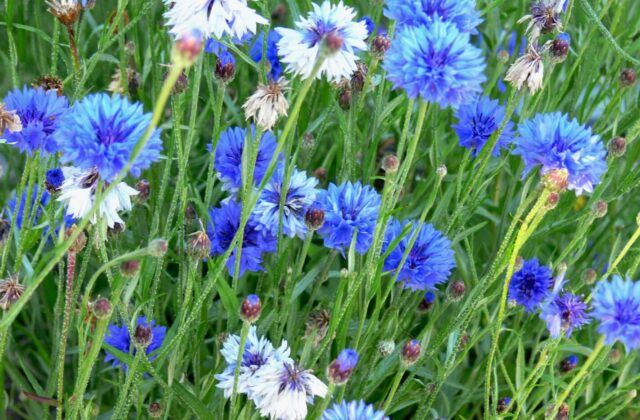
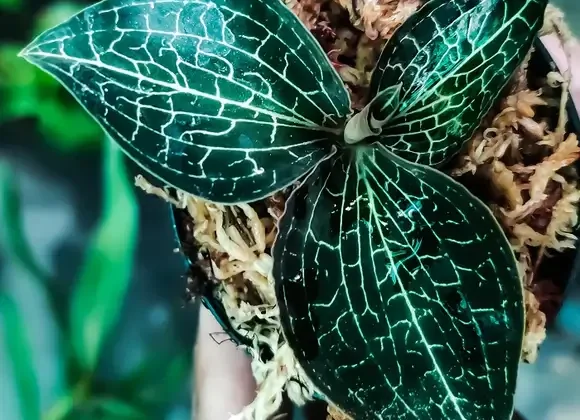
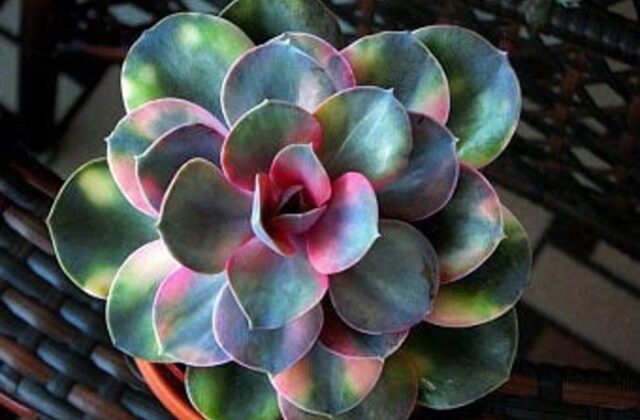
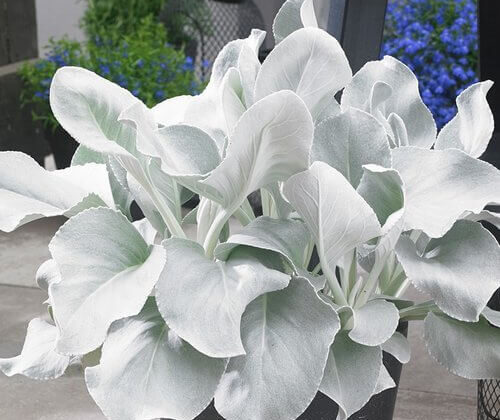
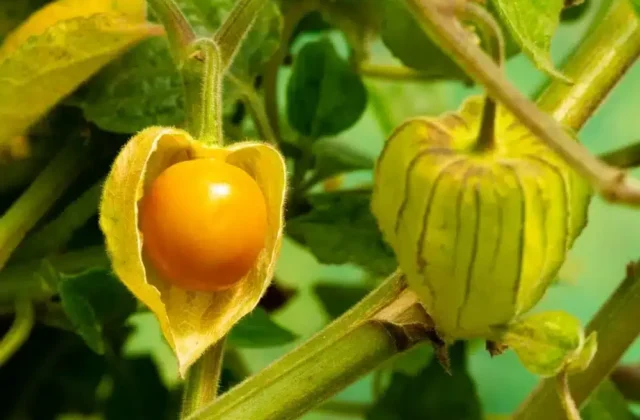
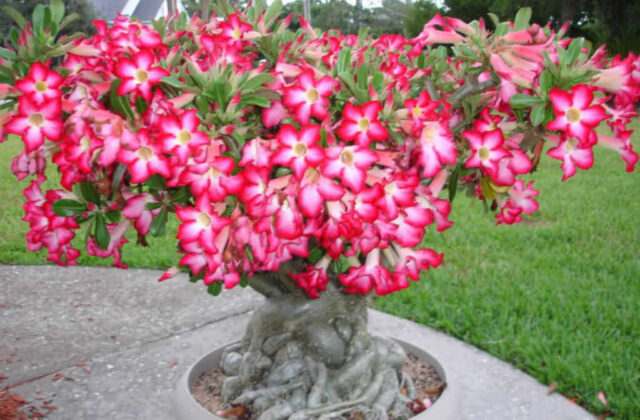
72 comments
Казино 1win — популярная сайт для онлайн азартных игр. Оно предлагает разнообразный выбор слотов, игр на столах и ставок на спорт в интуитивно понятном интерфейсе. Бонусы за регистрацию и постоянные акции делают игровой процесс выгодной и увлекательной. Стабильная работа сайта и оперативные выплаты делают 1win оптимальным выбором для фанатов азартных игр. Постоянно обновляемое рабочее зеркало в канале в Telegram – https://t.me/s/zerkalo_1win_rabochee_nasegodnya.
tipobet porn
We offer you the construction https://sitegereu.com of country houses and cottages «Веванта» – the construction of country houses and cottages in Moscow and the region
Heya i am for the primary time here. I found this board and I to find It really helpful & it helped me out much. I hope to provide one thing back and help others such as you helped me.
Hey people!!!!!
Good mood and good luck to everyone!!!!!
Lirigzon Gashi
Working interest for railway
Как увеличить доход с помощью арбитража трафика, которые помогут вам заработать больше.
5 причин начать заниматься арбитражем трафика прямо сейчас, с минимальными вложениями.
Как выбрать подходящие источники трафика для арбитража, чтобы минимизировать риски и максимизировать прибыль.
Топ-стратегии по созданию успешных рекламных компаний для арбитража трафика, для успешного монетизации трафика.
Как зарабатывать на арбитраже трафика без риска проигрыша, с использованием проверенных методов и подходов.
арбитраж адалт трафика traffic-arbitrage.com .
Нужна отделка дома в Москве и области? Наша бригада из опытных строителей из Белоруссии готова воплотить ваши идеи в реальность! Современные технологии, индивидуальный подход, и качество – это наши гарантии. Посетите наш сайт отделка домов и начните строительство вашего уюта прямо сейчас! #БелорусскаяБригада #Отделка #Ремонт #Достройка
An effective SEO company for promoting your website, your key to online success.
Optimal choice of an SEO company for your business, tips from experts.
Why you should turn to SEO professionals, what to expect from cooperation.
An article about the best SEO companies, customers’ experience.
Effectiveness of an SEO company for your website, major benefits.
search engine optimisation agency http://www.seorg-seo.com .
Нужна шлифовка сруба дома вашей мечты? Наша бригада из опытных строителей из Белоруссии готова воплотить ваши идеи в реальность! Современные технологии, индивидуальный подход, и качество – это наши гарантии. Посетите наш сайт шлифовка сруба дома и начните строительство вашего уюта прямо сейчас! #БелорусскаяБригада #Шлифовка
Кредит под залог: выгодное решение, в нашем блоге.
займ в залог недвижимости http://www.ctekc.ru/ .
Нужен интим досуг? На нашем сайте самые лучшие проститутки и индивидуалки Тюмени с влажными киськами! Они ждут звонка от состоятельного мужчины, который хочет секса и интим досуга! #проститутки #Шлюхи #Индивидуалки
Нужен интим досуг? На нашем сайте самые лучшие проститутки и индивидуалки Тюмени с влажными киськами! Они ждут звонка от состоятельного мужчины, который хочет секса и интим досуга! #проститутки #Шлюхи #Индивидуалки
Нужен интим досуг? На нашем сайте самые лучшие шлюхи Тюмени с влажными киськами! Они ждут звонка от состоятельного мужчины, который хочет секса и интим досуга! #Проститутки #Шлюхи #Индивидуалки
Нужна реконструкция деревянного дома? Наша бригада из опытных строителей из Белоруссии готова воплотить ваши идеи в реальность! Современные технологии, индивидуальный подход, и качество – это наши гарантии. Посетите наш сайт реконструкция дома и начните строительство вашего уюта прямо сейчас! #БелорусскаяБригада #Шлифовка #Реконструкция #Достройка
Нужна реконструкция деревянного дома? Наша бригада из опытных строителей из Белоруссии готова воплотить ваши идеи в реальность! Современные технологии, индивидуальный подход, и качество – это наши гарантии. Посетите наш сайт реконструкция дома в Ожерелье и начните строительство вашего уюта прямо сейчас! #БелорусскаяБригада #Шлифовка #Реконструкция #Достройка
Нужна реконструкция деревянного дома? Наша бригада из опытных строителей из Белоруссии готова воплотить ваши идеи в реальность! Современные технологии, индивидуальный подход, и качество – это наши гарантии. Посетите наш сайт реконструкция дома в Высоковске и начните строительство вашего уюта прямо сейчас! #БелорусскаяБригада #Шлифовка #Реконструкция #Достройка
Hey people!!!!!
Good mood and good luck to everyone!!!!!
Нужна реконструкция деревянного дома? Наша бригада из опытных строителей из Белоруссии готова воплотить ваши идеи в реальность! Современные технологии, индивидуальный подход, и качество – это наши гарантии. Посетите наш сайт реконструкция дома в Дрезне и начните строительство вашего уюта прямо сейчас! #БелорусскаяБригада #Шлифовка #Реконструкция #Достройка
Having read your blog, you obviously know what you are talking about. I’m sure visiting my page 67U about Online Business will be worth your time!
Нужна реконструкция деревянного дома? Наша бригада из опытных строителей из Белоруссии готова воплотить ваши идеи в реальность! Современные технологии, индивидуальный подход, и качество – это наши гарантии. Посетите наш сайт реконструкция дома в Талдоме и начните строительство вашего уюта прямо сейчас! #БелорусскаяБригада #Шлифовка #Реконструкция #Достройка
Нужна реконструкция деревянного дома? Наша бригада из опытных строителей из Белоруссии готова воплотить ваши идеи в реальность! Современные технологии, индивидуальный подход, и качество – это наши гарантии. Посетите наш сайт реконструкция дома в Звенигороде и начните строительство вашего уюта прямо сейчас! #БелорусскаяБригада #Шлифовка #Реконструкция #Достройка
Нужна реконструкция деревянного дома? Наша бригада из опытных строителей из Белоруссии готова воплотить ваши идеи в реальность! Современные технологии, индивидуальный подход, и качество – это наши гарантии. Посетите наш сайт реконструкция дома в Яхроме и начните строительство вашего уюта прямо сейчас! #БелорусскаяБригада #Шлифовка #Реконструкция #Достройка
Нужна реконструкция деревянного дома? Наша бригада из опытных строителей из Белоруссии готова воплотить ваши идеи в реальность! Современные технологии, индивидуальный подход, и качество – это наши гарантии. Посетите наш сайт реконструкция дома в Рузе и начните строительство вашего уюта прямо сейчас! #БелорусскаяБригада #Шлифовка #Реконструкция #Достройка
Dijital hak yönetimi Google SEO stratejileri ile işimizi büyüttük. Ziyaretçi sayımız katlandı. https://www.royalelektrik.com/fenerbahce-elektrikci/
DMCA atan piç SEO çalışmaları, Google’da rakiplerimizi geçmemizi sağladı. https://www.royalelektrik.com/atasehir-mimar-sinan-elektrikci/
фотоприколы фотоприколы .
Нужна реконструкция деревянного дома? Наша бригада из опытных строителей из Белоруссии готова воплотить ваши идеи в реальность! Современные технологии, индивидуальный подход, и качество – это наши гарантии. Посетите наш сайт реконструкция дома в Краснозаводске и начните строительство вашего уюта прямо сейчас! #БелорусскаяБригада #Шлифовка #Реконструкция #Достройка
Telif hakkı ihlal bildirimi SEO, online varlığımızı güçlendirdi ve rekabet avantajı sağladı. https://www.royalelektrik.com/topagaci-elektrikci/
Нужна реконструкция деревянного дома? Наша бригада из опытных строителей из Белоруссии готова воплотить ваши идеи в реальность! Современные технологии, индивидуальный подход, и качество – это наши гарантии. Посетите наш сайт реконструкция дома в Московском и начните строительство вашего уюта прямо сейчас! #БелорусскаяБригада #Шлифовка #Реконструкция #Достройка
Great insights! I found your take on sustainable living incredibly practical. Looking forward to implementing some of these tips! Check out [Get Info](https://getinfo.ink/?utm_source=google&utm_medium=search&utm_campaign=promotion) for more inspiring content.
Нужна реконструкция деревянного дома? Наша бригада из опытных строителей из Белоруссии готова воплотить ваши идеи в реальность! Современные технологии, индивидуальный подход, и качество – это наши гарантии. Посетите наш сайт реконструкция дома в Электроуглях и начните строительство вашего уюта прямо сейчас! #БелорусскаяБригада #Шлифовка #Реконструкция #Достройка
casino and gambling online 24bet-casino.com .
I do trust all the ideas youve presented in your post They are really convincing and will definitely work Nonetheless the posts are too short for newbies May just you please lengthen them a bit from next time Thank you for the post
Unlock the Secrets of New UK Online Casinos
mobile casino reviews mobile casino reviews .
Great Article bro thanks, situs slot gacor maxwin
From intimate gatherings to grand celebrations, we are here to make your day truly special.
pre wedding photoshoot price https://bestweddingcinema.com/wedding-photography/ .
Vidio Bocil 18+ Bokep
Link paling hoky saat ini hanya ada di https://chartersolutions.org/
Situs penyedia video orang bocil saat ini bokep jepang
Win Big Today
Best All Australian Casino Bonuses
jackpot online game jackpot online game .
Car rental for convenience and freedom of movement, satisfying all your needs.
alchemy fortunes http://www.casinowild24.com/all-games/slots/africa-goes-wils.
bagcılar elektrikçi SEO hizmetleri, Google’da üst sıralarda yer almamıza yardımcı oldu. https://royalelektrik.com/
Модные советы по созданию превосходных луков на каждый день.
Заметки профессионалов, новости, все новинки и мероприятия.
https://emurmansk.ru/pub/2024-09-10-demna-gvasaliya-revolyutsioner-mody-i-kreativnyy-provokator/
silivri elektrikçi Google SEO çalışmaları ile web sitemizin kullanıcı deneyimi de iyileşti. http://royalelektrik.com/
How to choose the right rental car for your trip, What to consider when renting a car, To avoid regretting your choice and avoid problems during your trip and to be satisfied with the service
free craps game online free craps game online .
трубный радиатор отопления вертикальный https://www.vertikalnyeradiatory.ru.
online casino offers online casino offers .
Hi there to all, for the reason
Модные заметки по выбору модных образов на каждый день.
Обзоры стилистов, новости, все новинки и мероприятия.
https://luxe-moda.ru/chic/505-7-luchshih-sumok-guess-dlya-pokupki-v-2024-godu-stil-i-funktsionalnost/
Смешные шутки. Короткие шутки.
Стильные советы по созданию необычных видов на каждый день.
Статьи экспертов, новости, все коллекции и мероприятия.
https://watches.superpodium.com/fashion/2804-7-reasons-to-love-patek-philippe-nautilus/
Düşük kaliteli dizin Google SEO, işimizi büyütmek için mükemmel bir araç. https://www.royalelektrik.com//esenyurt-elektrikci/
Нужна шлифовка деревянного дома? Наша бригада из опытных строителей из Белоруссии готова воплотить ваши идеи в реальность! Современные технологии, индивидуальный подход, и качество – это наши гарантии. Посетите наш сайт шлифовка дома и начните строительство вашего уюта прямо сейчас! #БелорусскаяБригада #Шлифовка
Выгодные предложения на технику Microsoft, которые не оставят вас равнодушными.
услуги по управлению облачной безопасностью http://www.best-lip-filler.com/ .
You made some really good points on your post. Definitely worth bookmarking for revisiting. Also, visit my website QN9 for content about Airport Transfer.
Takipçi yükseltme SEO optimizasyonu, Google’da üst sıralara çıkmamıza yardımcı oldu. http://www.royalelektrik.com/beylikduzu-elektrikci/
İçerik çiftleme Google SEO ile hedef kitlemize daha kolay ulaşıyoruz. https://www.royalelektrik.com/beylikduzu-elektrikci/
Beğeni ve takipçi SEO uzmanları ile çalışmak, Google sıralamalarında hızlı bir yükseliş sağladı. http://royalelektrik.com/beylikduzu-elektrikci/
İşbirliği Google SEO sayesinde web sitemin trafiği büyük ölçüde arttı. Kesinlikle öneririm! https://royalelektrik.com//beylikduzu-elektrikci/
Where to order quality double glazed windows in Melbournewindows & doors windows & doors .
Limitless battles on Lineage 2 servers
Lineage 2 Interlude https://cryptoexlicense.com/chronicle/lineage-2-interlude/ .
Нужна отделка и покраска деревянного дома? Наша бригада из опытных строителей из Белоруссии готова воплотить ваши идеи в реальность! Современные технологии, индивидуальный подход, и качество – это наши гарантии. Посетите наш сайт по отделке и покраске дома и начните строительство вашего уюта прямо сейчас! #БелорусскаяБригада #отделка дома #покраска дома
Стильные советы по созданию модных луков на любой день.
Мнения экспертов, события, все новые коллекции и мероприятия.
https://watches.superpodium.com/
Üsküdar profesyonel tıkanıklık açma Üsküdar Tıkanıklık Açma çözümlerimiz sayesinde, her alanda tıkanıklıkların ortadan kalıcı olarak kaldırılabilmesinde rol oynamaktayız. Kaliteli hizmet standartlarına sahip olmamızın ayrıcalığını yüksek seviyede sunuyor olmamız sayesinde, hızlı ve çözüme odaklı olarak hizmet ayrıcalığına sahibiz https://www.collcard.com/read-blog/2574
Üsküdar su tesisat arızası Teknolojik cihazlarla su kaçağını buldular ve çok profesyonel çalıştılar. https://www.cyberbogra.com/blogs/10019999/%C3%9Csk%C3%BCdar-Su-Ka%C3%A7ak-Tespiti
Üsküdar profesyonel su tesisatçı İlk kez kullandığımız bir firma ama çok memnun kaldık. Güzel iş çıkardılar. https://social.contadordeinscritos.xyz/blogs/5772/%C3%9Csk%C3%BCdar-Su-Ka%C3%A7a%C4%9F%C4%B1-Tespit
Üsküdar su kaçak tamirci Su kaçağı bulma konusunda gerçekten uzmanlar, tavsiye ederim. https://celebisland.com/read-blog/17890
Bahçe sulama tesisatı Üsküdar’daki en iyi su kaçağı tespiti firması. İşlerini çok iyi yapıyorlar. https://posta2z.com/read-blog/71229